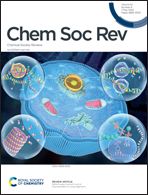Engineering strategies and active site identification of MXene-based catalysts for electrochemical conversion reactions
Abstract
MXenes have been extensively studied due to their high metallic conductivity, hydrophilic properties, tunable layer structure and attractive surface chemistry, making them highly desirable for energy-related applications. However, slow catalytic reaction kinetics and limited active sites have severely impeded their further practical applications. Surface engineering of MXenes has been rationally designed and investigated to regulate their electronic structure, increase the density of active sites, optimize the binding energy, and thus boost the electrocatalytic performance. In this review, we comprehensively summarized the surface engineering strategies for MXene nanostructures, including surface termination engineering, defect engineering, heteroatom doping engineering (metals or non-metals), secondary material engineering, and extension to MXene analogues. By identifying the roles of each component in the engineered MXenes at the atomic level, their intrinsic active sites have been discussed to establish the relationships between the atomic structures and catalytic activities. We highlighted the state-of-the-art progress of MXenes in electrochemical conversion reactions including hydrogen, oxygen, carbon dioxide, nitrogen and sulfur conversion reactions. The challenges and perspectives of MXene-based catalysts for electrochemical conversion reactions are presented to inspire more efforts toward the understanding and development of MXene-based materials to meet the ever-growing demand for a sustainable future.



 Please wait while we load your content...
Please wait while we load your content...